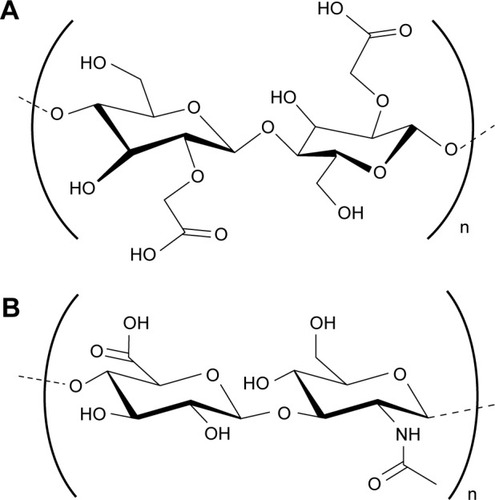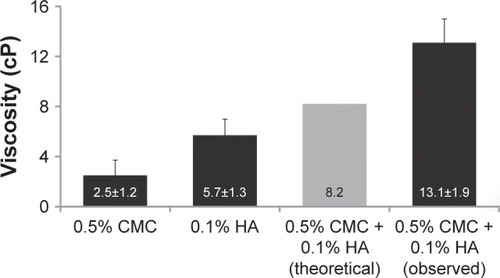Figures & data
Figure 1 Structure of CMC and HA.
Abbreviations: CMC, carboxymethylcellulose; HA, hyaluronic acid.

Figure 2 Rheological analysis of combinations of low (A), medium (B), and high (C) concentrations of CMC and HA polymers.
Abbreviations: CMC, carboxymethylcellulose; HA, hyaluronic acid.

Figure 3 Bulk viscosity of the combined solution of 0.5% CMC and 0.1% HA was higher than predicted by additive effects.
Abbreviations: CMC, carboxymethylcellulose; HA, hyaluronic acid.

